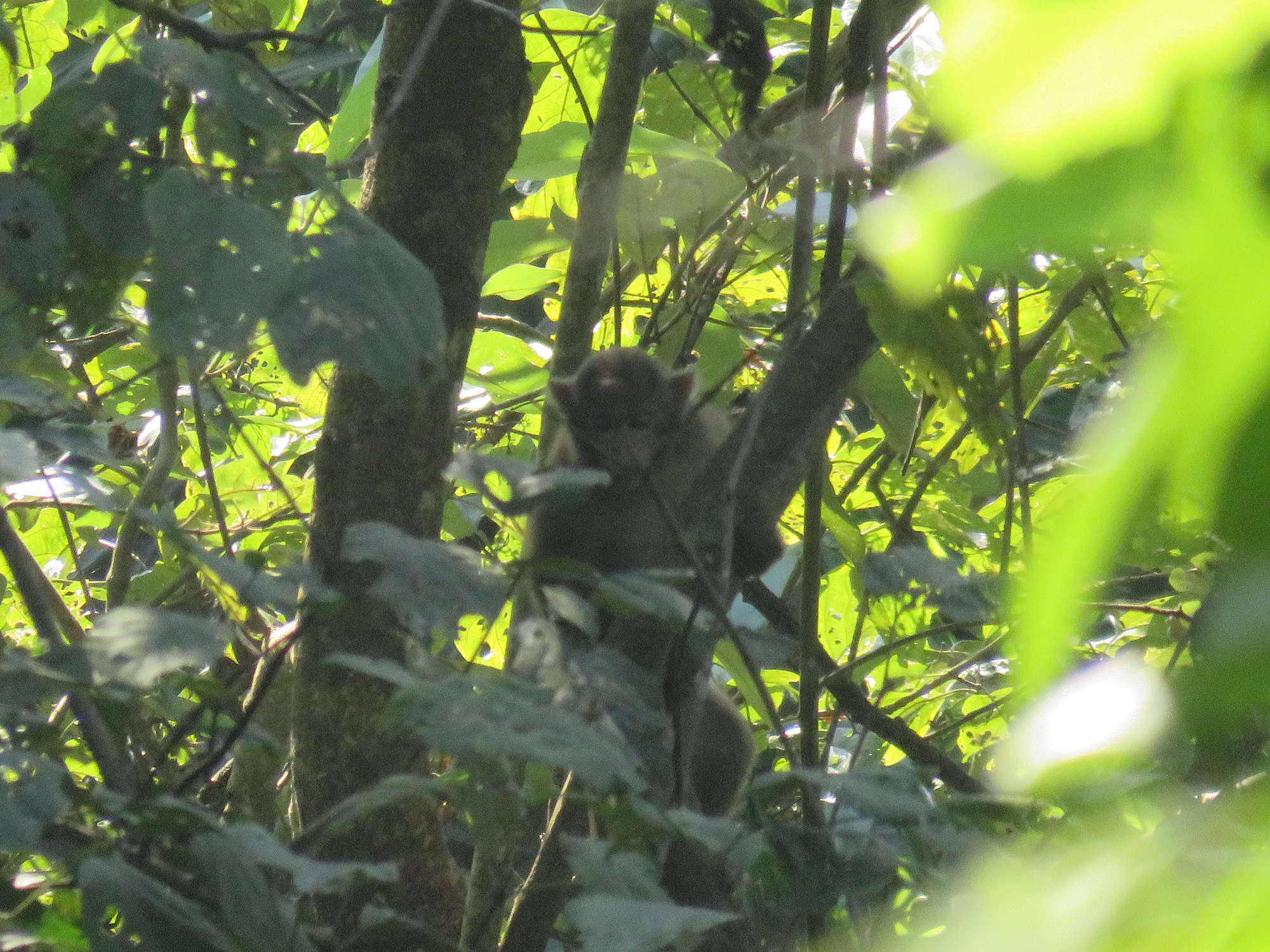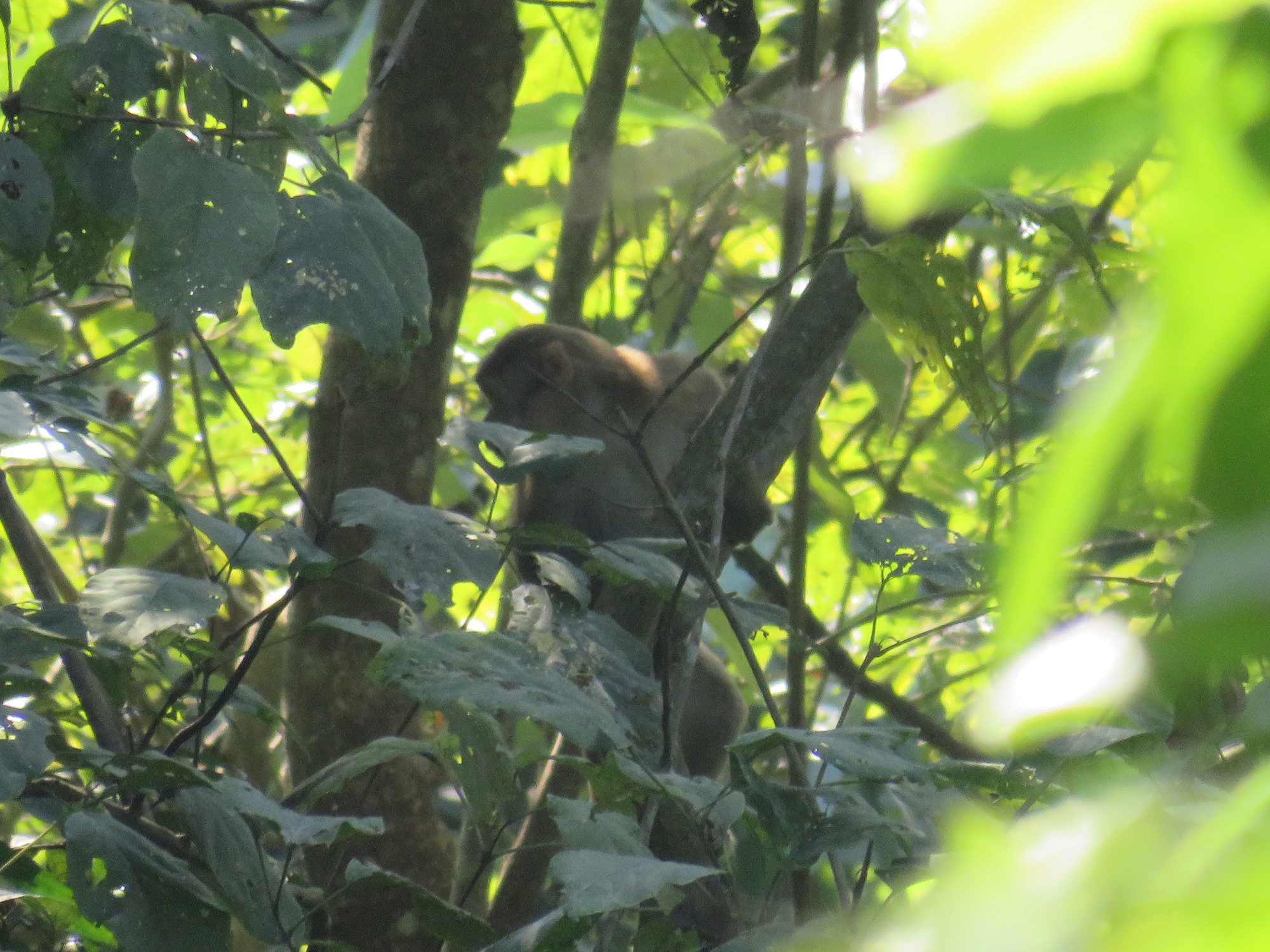Taniya Talwar1* and Mrigen Rabha2
1Ecologist, 2Volunteer
7WEAVES Research Foundation
B.K Kakati Road Ulubari Guwahati Kamrup PIN-781007 Assam, India
*Corresponding author, Email: taniya@7weaves.com


Picture 1 & 2: Subadult of Assamese Macaque
On 10th November 2022, during the primate survey in Kawasing Forest Village, a troop of seven Assamese Macaques, Macaca assamensis, including two juveniles were observed at the location 25.908850N° and 91.485751E°. While trying to get a better view of the species, it was observed that they were timid and would vanish into the thickets on seeing human intruders. The five adults we saw had scruffy fur, pinkish face and a small tail, which was not prominently sighted. The juveniles have paler faces with more facial hair. Overall coat colouration of the juveniles were lighter than that of adults. Upon interviewing the fringe villagers, we were told that the troop size is of 20 individuals.

Picture 3: Map showing the location where Assamese Macaques were spotted
Kawasing Reserve Forest is a part of and is contagious with Loharghat Forest Range, all of which falls under the Kamrup Sal Forest – one of the last remaining Sal forests in Western Assam. This tropical broadleaf forest is dominated by trees such as Artiocarpus chama, Dipterocarpus benghalensis, Bambusa species and many more. This area is 8 km away from the KBA (Key Biodiversity Area), Chandubi Lake and is rich in biodiversity with the important and rare faunal diversity including Indian Elephants, Giant Malayan Squirrel, Common Leopard; and primates such as Hoolock Gibbon, Bronze-bellied Capped Langur and Bengal Slow Loris.
Assamese Macaque is known as “Deo-Bandor” in Rabha. They are endemic to the tropical and subtropical forests of South-east Asia. They have short tails that are between 20-40 cms long, dark brownish to blackish hair, and with cheek hairs extending up to the ear. Males are of greater sizes. They consume a variety of foods and are more active in the mornings and nights.
This species is categorised as Near Threatened as per 2008 IUCN Red Data List and its population trend is declining. In Northeast India, habitat loss is the primary danger to the wild monkey populations. Forests are selectively logged for fuelwood and building materials, and they are exploited for natural resources, leading to habitat degradation from clear-cutting for human habitation and agriculture.
Proper survey needs to be conducted across its range to determine the current status of Assamese Macaques. This will help in implementation of the conservation measures to protect the species extinction.
ACKNOWLEDGEMENT
The authors would like to thank Bimal Rabha for helping them to find the exact location of the Assamese Macaques, and Rituraj Dewan and Dr. Leons Mathew Abraham for their valuable insights and suggestions.
REFERENCES:
Srivastava, A. and Mohnot, S.M. (2001). Distribution, conservation status and priorities for primates in Northeast India. ENVIS Bulletin: Wildlife and Protected Areas. 1(1): 102-108.
Zhou, Q.; Wei, H.; Huang, Z. and Huang, C. (2011). Diet of the Assamese macaque Macaca assamensis in limestone habitats of Nonggang, China. Current Zoology. 57(1): 18-25.



